 Selling your home and moving on to bigger and better things can be exciting, especially in a seller’s market. However, some unexpected stress might come along with the home-selling process. Here are four ways selling your home may be more disruptive than you thought—and how to get through the process in one piece. 1. Taking the “Home” out of Your House Your real estate agent will give you advice, and potential buyers will have their own personal tastes and criticisms, but try not to take all of it too hard. Even overhearing what potential buyers might want to change in your home can set off an emotional response. If you have made some personal decor choices over the years that your real estate agent suggests undoing, such as taking down artwork or painting over bold-colored walls, remember that this advice is just to help you reach a larger potential-buyer audience. 2. Being Available at All Times While your real estate agent will do most of the heavy lifting when it comes to selling your home, there will be things you’ll need to be available for. Potential homeowners may want to view your home at unscheduled times. Once an offer is accepted, buyers might want to schedule additional inspections or have questions about who will be covering what in the closing costs. Remember, as owner of your home, you will need to be available for selling-related issues. 3. Working Through Negotiations Unexpected issues might come up when closing on your home, from additional inspections to new damages found that weren’t in initial disclosures. Your buyers may come back asking to work with you to split repair costs or negotiate fixing problems before move-in. Try your best not to let curve balls get to you. They are normal and aren’t things that will necessarily undo the closing process on your home. 4. A Quick Move-Out Buyers may be quick to close on a home due to their own living situation or parameters of preapproved mortgages. Mentally and logistically preparing yourself for the possibility of moving quickly is a good idea. If closing happens swiftly, you might even be able to put together a deal with the homebuyers, such as negotiating more time to move out or even “renting” your home for a period of time after closing to buy some time to pack up and move. Having a solid real estate agent in your corner really helps relieve stress. They do the behind-the-scenes work so you don’t have to deal with every detail. If you’re thinking about selling or have questions, contact me today!
0 Comments
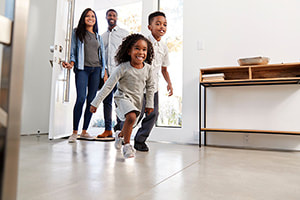 For the third consecutive month, existing-home sales declined, according to the National Association of Realtors (NAR). In April, two of the four major sales regions in the country experienced month-over-month sales gains, while two recorded losses. Yet when it came to year-over-year sales, every region saw sales declines. Lawrence Yun, chief economist for NAR, believed that higher home prices and mortgage rates led to a reduction in buyer activity. “It looks like more declines are imminent in the upcoming months,” he added, “and we’ll likely return to the pre-pandemic home sales activity after the remarkable surge over the past two years.” Inventory Lower Than Last Year After years of record-low inventory levels, the nation’s housing supply has started to improve, though the pace is slow. At the end of April, there were 1,030,000 units available for sale, up 10.8% from March but down 10.4% from April 2021. At the current sales pace, this supply would last just 2.2 months, up from 1.9 months a month ago but down from 2.3 months a year ago. This fast sales pace led to a contradiction in the housing market, according to Yun. “The market is quite unusual as sales are coming down, but listed homes are still selling swiftly, and home prices are much higher than a year ago.” Home Prices Are up but Properties Are Selling Quickly Prices increased across the country, with the median existing-home price climbing to $391,200, up 14.8% from a year ago. This marked the 122nd consecutive month of year-over-year price increases—the longest streak on record. The average property remained on the market for just 17 days in April, unchanged from both a month ago and a year ago. Of all the homes sold in April 2022, 88% were available for less than 30 days. Who’s Buying? “An increasing number of buyers with short tenure expectations could opt for five-year adjustable-rate mortgages, thereby assuring fixed payments over five years because of the rate reset,” according to Yun, who also suggested that the number of cash buyers, who are not impacted by mortgage rate changes, remained elevated. In April, 26% of transactions were all cash, down from 28% in March but up from 25% in April 2021. Individual investors or second-home buyers, who account for most cash sales, accounted for 17% of all home purchases, down from 18% a month ago and unchanged from a year ago. First-time buyers, meanwhile, represented 28% of homebuyers, down from 30% in March and 31% in April 2021. Regional Breakdown Northeast: Existing-home sales annual rate of 670,000; an increase of 1.5% from March 2022 but a decrease of 10.7% from April 2021. The median sales price of $412,100 increased 8.1% from April 2021. Midwest: Existing-home sales annual rate of 1.31 million; an increase of 3.1% from March 2022 but a decrease of 1.5% from April 2021. The median sales price of $282,000 increased 8.7% from April 2021. South: Existing-home sales annual rate of 2.49 million; a decrease of 4.6% from March 2022 and 5.7% from April 2021. The median sales price of $352,100 increased 22.2% from April 2021. West: Existing-home sales annual rate of 1.14 million; a decrease of 5.8% from March 2022 and 8.1% from April 2021. The median sales price of $523,000 increased 4.3% from April 2021.  Increasing mortgage rates and high inflation are taking a toll on the housing market. In March, existing-home sales decreased for the second month in a row, according to the National Association of Realtors (NAR). Year-over-year sales were down in every sales region in the country, while the West was the only sales region to not record a drop in month-over-month sales. Mortgage rates are expected to climb higher throughout the year; as a result, Lawrence Yun, chief economist for NAR, predicted that sales transactions should contract by 10% this year. Prices Higher Year over Year Prices are also expected to readjust throughout the year, which should come as welcome news to buyers. The median existing-home price for all types of housing increased 15% year over year. Every sales region recorded price increases. What’s more, March marks the 121st consecutive month of year-over-year increases, besting last month’s record. The lack of available inventory remains a factor in the price gains. However, “sellers should not expect the easy-profit gains and should look for multiple offers to fade as demand continues to subside,” stated Yun. The average property remained available for just 17 days in March, down from 18 days in both February and March 2021. Of all the homes sold in March 2022, 87% were available for under one month. More Homes Needed Although improving, total housing inventory remained low in March; there were 950,000 units available for sale, up 11.8% from February but down 9.5% from March 2021. At the current sales pace, this inventory level would supply the market for only two months, up from 1.7 months in February but down from 2.1 months in March 2021. All-Cash Sales Climb “With rising mortgage rates, cash sales made up a larger fraction of transactions, climbing to the highest share since 2014,” according to Yun. All-cash sales represented 28% of all transactions in March, up from 25% in February and 23% in March 2021. First-time buyers accounted for 30% of all transactions in March, up from 29% in February. According to the NAR 2021 “Profile of Home Buyers and Sellers,” the annual share of first-time buyers was 34%. The demand from first-timer buyers could be driven by the desire to lock in at the current mortgage rate before rates go higher. Individual investors and second-home buyers—two groups who account for many all-cash sales—were responsible for 18% of all purchases in March, down from 19% in February but up from 15% in March 2021. Regional Breakdown Northeast: Existing-home sales annual rate of 670,000; a decrease of 2.9% from February 2022 and 11.8% from March 2021. At $390,200, the median sales price increased 6.8% from March 2021. Midwest: Existing-home sales annual rate of 1.27 million; a decrease of 4.5% from February 2022 and 3.1% from March 2021. At $271,000, the median sales price increased 10.4% from March 2021. South: Existing-home sales annual rate of 2.62 million; a decrease of 3% from February 2022 and 3% from March 2021. At $339,000, the median sales price increased 21.2% from March 2021. West: Existing-home sales annual rate of 1.21 million; unchanged from February 2022 but a decrease of 4.7% from March 2021. At $519,900, the median sales price increased 5.4% from March 2021.  Most consumers are familiar with the concept of house flipping, thanks to a variety of reality shows. Smart, seasoned investors will renovate a house to be move-in ready and then sell at tight profit-margins to make a quick sale. But how does a buyer know if a flipped home is a solid buy or a real rip-off? When it comes to buying a flipped house, asking these three big questions will help ensure you don’t "flip out." 1. Can I get a Copy of the Property History? As a buyer, it’s wise to find out how many times the home has been sold in the past, as well as the history and prices of those prior sales. Incredibly low sales prices can indicate there is more wrong with the property than what meets the eye. Invest in the help of a seasoned real estate professional to help you acquire crucial property history information before submitting an offer. In full disclosure states, the law requires for buyers to be provided with a statement from the seller releasing property information for the past several years. However, not all states are full disclosure states, so it pays off for buyers to get to know real estate law for their local area. 2. What Renovations Have Been Done? The saying "beauty is only skin deep" can be applied to flipped houses too. Some investors will only spend enough money to renovate the cosmetic interior of the house, but ignore major repairs for serious structural problems. Investors who do this are hoping to rope in a buyer and get out of the deal with cash in hand before anyone is the wiser, making a property like this a bad investment. Buyers should hire their own home inspector to evaluate the condition of the home before submitting a contract to purchase. Inspections not only evaluate the condition of completed repairs, but also what bigger problems might be lurking underneath the surface. 3. Do You Have Permits? Good investors will obtain permits for any work done on a property more complex than a cosmetic facelift. If permits do not exist, this can cause issues with closing on a property and can result in additional fines if buyers enter into a home purchase contract sans required documentation. Seek out professional legal and real estate advice; call your local city municipal office to find out what work requires a permit and what doesn’t before buying a flipped house. A flipped house could be a solid buy, or it could be a cosmetically appealing home disguising larger unseen issues. Buyers should approach these home sales with caution and verify all documentation. 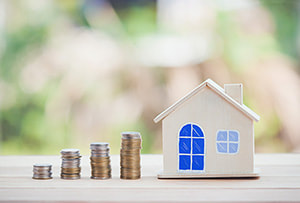 Buyers looking to enter the housing market are being hit with both rising mortgage rates and sustained price increases, which are both negatively impacting housing affordability. According to Lawrence Yun, National Association of Realtors' (NAR) chief economist, some buyers "who had previously qualified at a 3% mortgage rate are no longer able to buy at the 4% rate." In addition, monthly payments have increased by 28% from a year ago. Yet despite the decline in housing affordability, buyer demand is still strong, with multiple offers being recorded on most properties. Housing Becoming Less Affordable Though the demand from buyers still appears to be strong, many are being priced out of the market due to those climbing mortgage rates and escalating prices. In addition, increasing inflation is taking a toll on consumers' savings. However, Yun predicts improving conditions in the coming months: "I expect the pace of price appreciation to slow as demand cools and as supply improves somewhat due to more home construction." The median existing-home price for all housing types climbed 15% in February. For the past 120 consecutive months, prices have increased year-over-year; what's more, home prices climbed in every sales region in the country. Home Inventory Still Low The increase in prices can be attributed in part to the lack of supply. By the end of February, the inventory of available homes reached 870,000, down 15.5% from a year ago. At the current sales pace, this level of inventory would supply the market for just 1.7 months; this was up from the 1.6-month supply in January but down from the 2.0-month supply in February 2021. Overall existing-home sales, meanwhile, declined in February, with each sales region in the country recording month-over-month sales decreases. According to NAR, year-over-year sales were down in three regions but were up in the South. Who's Purchasing? Fewer first-time buyers were able to make purchases, with this group accounting for just 29% of all sales in February, down from 31% a year ago. According to NAR's 2021 Profile of Home Buyers and Sellers, the annual share of first-time buyers was 34%. Individual investors and second-home buyers—two groups who account for most all-cash sales-were responsible for 19% of all transactions, up from 17% in February 2021. All-cash sales represented 25% of all transactions in February 2022 and 22% in February 2021. The average property remained available for sale for just 18 days in February, down from 20 days a year ago. Of all the homes sold in February, 84% were on the market for less than 30 days. Regional Sales Breakdown Northeast: Existing-home sales annual rate of 690,000; this was a decline of 11.5% from a month ago and a decrease of 12.7% from a year ago. The median sales price of $383,700 was up 7.1% from February 2021. Midwest: Existing-home sales annual rate of 1.33 million; sales dropped 11.3% from January and 1.5% from February 2021. At $248,900, the median sales price represented a 7.5% increase from a year ago. South: Existing-home sales annual rate of 2.79 million; this was a decrease of 5.1% month-over-month but an increase of 3.0% year-over-year. The median sales price jumped 18.1% from February 2021 to $318,800. West: Existing-home sales annual rate of 1.21 million; sales were down 4.7% from a month ago and 8.3% from a year ago. At $512,600, the median price climbed 7.1% from February 2021. 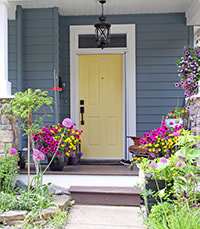 First impressions mean a lot—especially when it comes to your home’s curb appeal. Whether you’re getting ready for resale or just want to update the exterior, you may be thinking your home is ready for a curbside makeover. Here are some ideas to maximize your home’s curb appeal: Is Your Home Photogenic? The best way to look at your home through the eyes of a potential buyer is to take pictures of it. Take one from directly across the street and others from angles on both sides of the home. Honestly compare your pictures with those of comparable homes online. Make a list of what could be improved. The Power of Pressure Washing Nothing says, “I care about my property,” more than cleanliness. And pressure washing works wonders. Wash the front of the home along with the garage doors, driveway, and sidewalk. If your home’s paint job is looking dingy, you may find that pressure washing eliminates the need for new paint. Or you may find that painting the trim is the only touch-up you need. A pressure washer can be rented from a big-box home improvement store. Let the Light In! Sparkling clean windows invite visitors to look inside your house and offer those already inside the home a view of your beautiful landscaping. If your home is several stories high, you may need to hire a professional window cleaning service. Some services also include gutter cleaning. Focus On Your Front Door Give the front door a fresh coat of paint to make it look truly inviting. In addition, polish or replace all metal pieces, such as door knockers and kick plates. New house numbers are another easy way to make your porch look polished. Think about adding blooming flowers for spring and summer and a wreath on the front door to add a welcoming look. Finally, if the front porch lighting looks dated, upgrade to new fixtures. Trim Untidy Trees and Shrubs Many homeowners become accustomed to overgrown shrubs and ornamental trees. But overgrown vegetation effectively hides your home from view. It never hurts to remove too-big plants and replace them with trendy bedding options. Fresh Mulch Makes Flower Beds Look Better Even if your flower beds have mulch, add more and don’t be stingy. New, thick mulch makes a so-so planted area look like a professionally maintained one. For an even more manicured look, add some edging material. 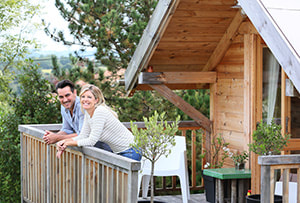 Many things affect mortgage rates, such as your credit score, your debt-to-income ratio, and the location of your property. One thing not a lot of people have to think about is occupancy type—but this will significantly affect rates. So what is occupancy type? Occupancy type is how you use a property. There are three types: Principal residence. This is the home where you live most of the time. For mortgage purposes, this is the home where you spend most of each year, and it is also the address listed on your federal and state tax returns. Second home. This is a property you occupy for part of the time. In most cases, this means a vacation home—a cabin by the lake or a house on the beach. If your job requires you to split your time between two locations and you decide to buy a house in the second location, this would also be a second home. Investment property. This is a property you purchased with the intention of generating income. Be aware that a primary residence can turn into an investment property if, for example, you build a tiny house in the yard and rent it out. Flipping a house also makes it an investment property. If you have a vacation home that you occupy for a few weeks and then rent out the rest of the time, that also becomes an investment property. Why Do Mortgage Rates Change by Occupancy Type? Lenders give different rates because they consider these occupancy types to have different risk levels. Let’s say you own a house you live in and a duplex you’re renting out. If things change, which mortgage will you stop paying first? Lenders consider second homes riskier than principal residences and investment properties riskier than both. The riskier the home, the higher down payment or credit score your lender might require from you. Be Transparent with the Lender About the Property Use It’s illegal to intentionally misrepresent the intended use of a property. This can result in hefty fines and put you in default of your loan agreements. Some mortgage companies randomly inspect second homes to make sure they aren’t being rented out. The IRS considers your second home a residence if you use it for at least 14 days per year or 10% of the days you rent it out, whichever is greater, although your lender might have stricter rules. What if you retire and decide to move to that beach house and rent out your primary residence? You can always change the occupancy status as long as you have had the mortgage for about a year, even if it’s not paid off yet. If you are considering buying a second home or an investment property, you should understand how this can affect your mortgage. It’s also important to be transparent with your lender about the purpose of the property and to work with them to get the loan you need. Are you considering buying or selling a property? I have answers for all your real estate-related questions. Contact me today.  Mortgage rates are up and expected to keep climbing; this might lead to moderation in demand from homebuyers and a slight slowdown of home price growth. Despite this, economists with Freddie Mac believe the single-family housing market should remain stable throughout the year. According to Freddie Mac Chief Economist Sam Khater, "The combination of a large number of entry-level homebuyers facing a shortage of entry-level inventory of homes for sale should keep the housing market competitive." Home sales are expected to reach 6.9 million by the end of the year and climb to 7 million in 2023. Mortgage Moves The average 30-year fixed-rate mortgage (FRM) has climbed to just below 4%; the highest it's been since May 2019. In comparison, in 2021, the 30-year FRM was averaging just 3%. With rising mortgage rates, home price growth is expected to slow. In 2021, house price growth was 15.9%; this is forecasted to drop to 6.2% in 2022 and to 2.5% in 2023. Housing Affordability Rising mortgage rates directly impact home affordability. Monthly mortgage payments consist of a combination of principal loan amounts, taxes, insurance, and interest. The higher the interest rate, the higher a homeowner's monthly payments. As such, an increase in mortgage rates can hit the monthly budget of homeowners, as well as decrease the amount of house a homebuyer can afford. Talk to an Expert While it is always wise to keep an eye on mortgage rates, the fear of fluctuating rates shouldn't stand in the way of your dreams of home ownership. Talk to the experts. Understand your finances so you know what you can afford and so that you can make an informed decision on the purchase of a new home that fits within your budget. 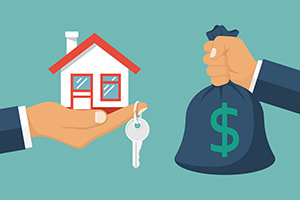 Three sales regions in the country reported monthly gains in home sales, while sales remained steady in the fourth region. Yet when comparing year-over-year sales, only one region saw an increase in home sales, while the other three recorded sales decreases. There was more unity across the country when comparing existing-home prices, however, as every region saw price gains. Median home prices were up 13.9% in November from a year earlier, reaching $310,800. This marked the 117th month in a row of year-over-year price increases—a new record. Yet this record might come to an end in 2022. According to Lawrence Yun, chief economist for the National Association of Realtors, both inflation and the pace of price appreciation is expected to slow over the coming year. This view was echoed by economists and housing experts at the NAR Real Estate Forecast Summit; the consensus prediction was that inflation would ease at a 4% rate, while home prices in 2022 would rise at a more moderate pace of 5.7%. Rising Mortgage Rates Yun believes recent buyers have been driven by a forecasted rise in mortgage rates. “Locking in a constant and firm mortgage payment motivated many consumers who grew weary of escalating rents over the last year.” While mortgage rates are expected to climb in the coming months, the increase is expected to be manageable. Yun expects the 30-year fixed mortgage rate to average 3.7% by the end of 2022, with the average commitment rate for the year hitting 3.11%. Inventory of Unsold Homes Down Again The consistent lack of supply that has hindered the housing market for years saw no improvement in November, with total housing inventory reaching 1.11 million units. This was down 9.8% from a month earlier and 13.3% from a year earlier, when there were 1.28 million homes on the market. At the current sales pace, November’s housing inventory would supply the market for just 2.1 months, a lower inventory than at the same time a month and year ago. “Supply-chain disruptions for building new homes and labor shortages have hindered bringing more inventory to the market,” according to Yun. The low levels of supply were a contributing factor to November’s record-setting home prices. Houses Selling Quickly Fewer first-time buyers were able to gain a foothold in the housing market in November; this group accounted for just 26% of all home purchases, down from 32% a year earlier. According to the NAR “2021 Profile of Home Buyers and Sellers,” the annual share of first-time buyers in 2021 was 34%. All-cash sales, meanwhile, were up, accounting for 24% of all purchases; in comparison, 20% of all transactions were all-cash in November 2020. The average property stayed on the market for just 18 days, three days less than a year earlier. Of all the homes sold in November 2021, 83% were available for less than one month. Regional Breakdown Northeast - Existing-home sales annual rate of 760,000; unchanged from October 2021 and a decrease of 11.6% from November 2020. The median sales price of $372,500 increased 4.7% from November 2020. Midwest - Existing-home sales annual rate of 1.52 million; an increase of 0.7% from October 2021 but a decrease of 0.7% from November 2020. The median sales price of $260,100 increased 9% from November 2020. South - Existing-home sales annual rate of 2.85 million; an increase of 2.9% from October 2021 and 1.1% from November 2020. The median sales price of $318,900 increased 18.4% from November 2020. West - Existing-home sales annual rate of 1.33 million; an increase of 2.3% from October 2021 but a decrease of 3.6% from November 2020. The median sales price of $507,200 increased 8.4% from November 2020. 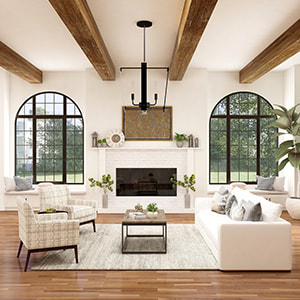 It’s always a great idea to prepare your home before selling it. Putting in the effort to make your home feel warm and welcoming is worth it if you want to sell your home quickly. Make potential buyers feel right at home with these five tips. 1. Stage It to Sell A decade ago it was mostly upper-end sellers who staged their homes for sale. Now it’s expected of every homeowner to remove distractions such as knickknacks and personal photographs so that buyers can imagine their family living in the home. However, be careful not to overdo the depersonalization. Too much of a minimalist look can be off-putting if the home is left with no sense of anyone living there. Let buyers see all the space that is available while still leaving some of the personal touches that keep things feeling comfortable and snug. 2. Go Squeaky Clean Before you list, it is a good idea to hire a cleaning service. Have them really scour the place, top to bottom, until it gleams. Evidence suggests that buyers are far more likely to purchase a home that is immaculately clean than one that feels a little shabby around the edges. 3. Give a Warm Reception When getting ready for buyers, make sure your home isn’t too hot, too cold, or too stuffy. An ambient 60 to 68 degrees Fahrenheit is best for making your buyers feel comfortable. 4. Create a Pleasant-Smelling Home Offensive odors are the single biggest turnoff for would-be buyers. Don’t attempt to mask them with air freshener; fix the problem at the source. Air out the house, wash trash cans, and clean upholstery to eliminate pet and smoking smells. When your home is odor-neutral, try introducing pleasant smells that give off a homey aroma. While it might be impractical to bake cookies for every viewer who visits your home, you could light some candles or brew some fresh coffee. 5. Introduce the Neighborhood Buyers typically want to learn about the neighborhood, so provide information in the listing about nearby schools, transport links, dining, shopping, and recreation areas. Remember, you’re marketing a lifestyle as well as a home, so remember to show off the neighborhood in its best light. Please contact me if you’re interested in more tips for getting your home ready to sell. I can help you prep to get the best possible price for your home. |
AuthorBe informed with the latest real estate news and useful real estate related information. Archives
March 2025
Categories
|
